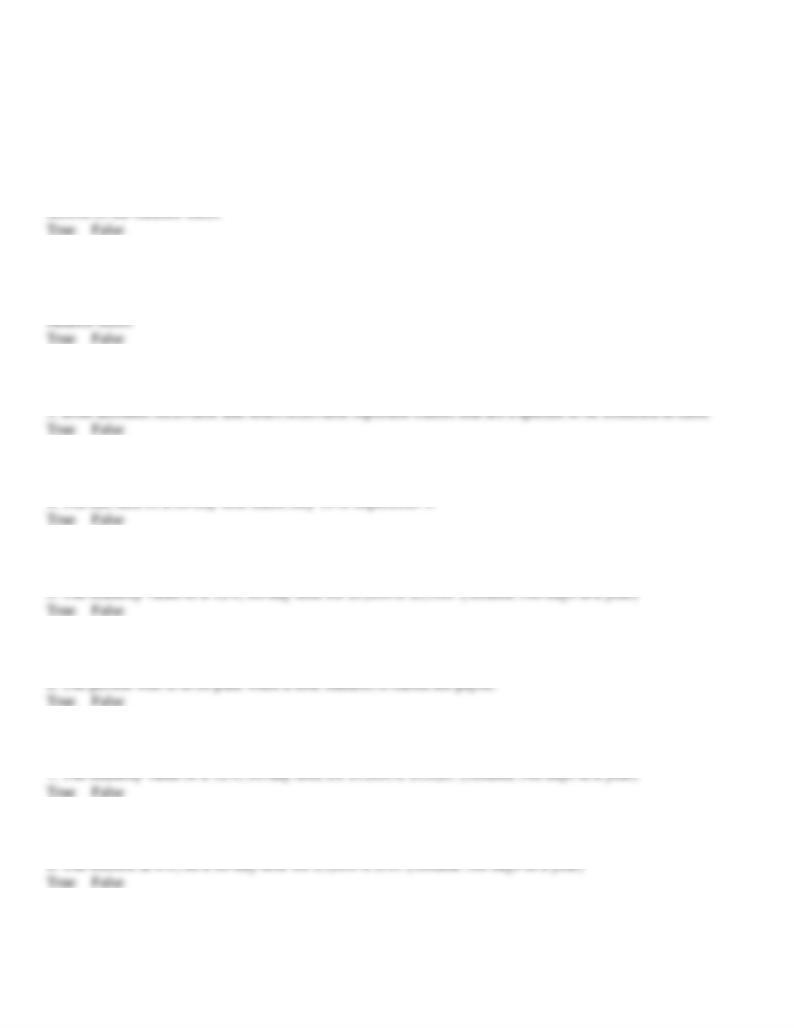
Chapter 6--Receivables and Inventories
Student: ___________________________________________________________________________
1. All receivables that are expected to be realized in cash within a year are presented in the current assets
2. Receivables not expected to be collected within one year are reported in the fixed assets section of the
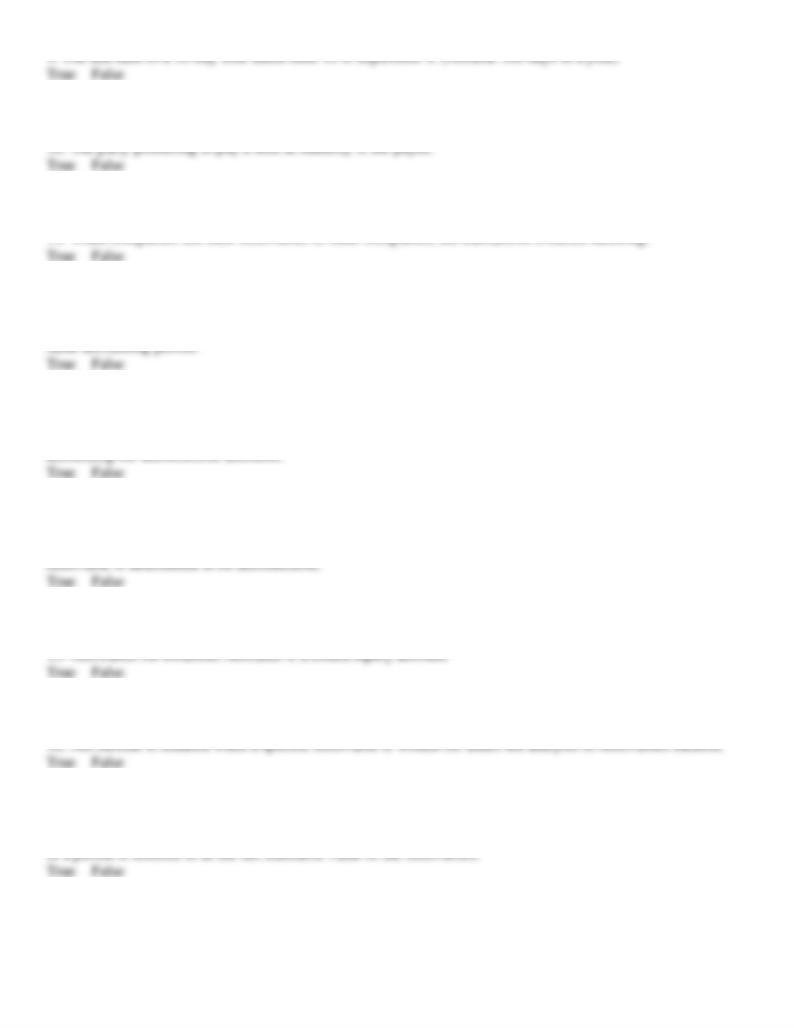
12. Under the direct write-off method, an attempt is made to match Bad Debt Expense to sales revenues in the
13. Generally accepted accounting principles do not normally allow the use of the allowance method of
14. The direct write-off method records uncollectible accounts expense in the year the specific account
17. The difference between the total receivables and the balance in Allowance for Doubtful Accounts at the end

18. At the end of a period before the accounts are adjusted, Allowance for Doubtful Accounts has a balance of
$250, and net sales on account for the period total $500,000. If uncollectible accounts expense is estimated at
19. The estimate of uncollectible accounts receivable based on the sales method violates the matching
20. Inventories of merchandising and manufacturing businesses are reported as current assets on the balance
21. The FIFO method of costing inventory is based on the assumption that costs should be charged against
22. Of the three widely used inventory costing methods (FIFO, LIFO, and average), the FIFO method of costing
inventory is based on the assumption that costs are charged against revenues in the order in which they were
23. During inflationary periods, the use of the FIFO method of costing inventory will result in a greater amount
24. During inflationary periods, the value of inventory that appears on the balance sheet using FIFO method
25. During inflationary periods, the use of the LIFO method of costing inventory will result in a lesser amount
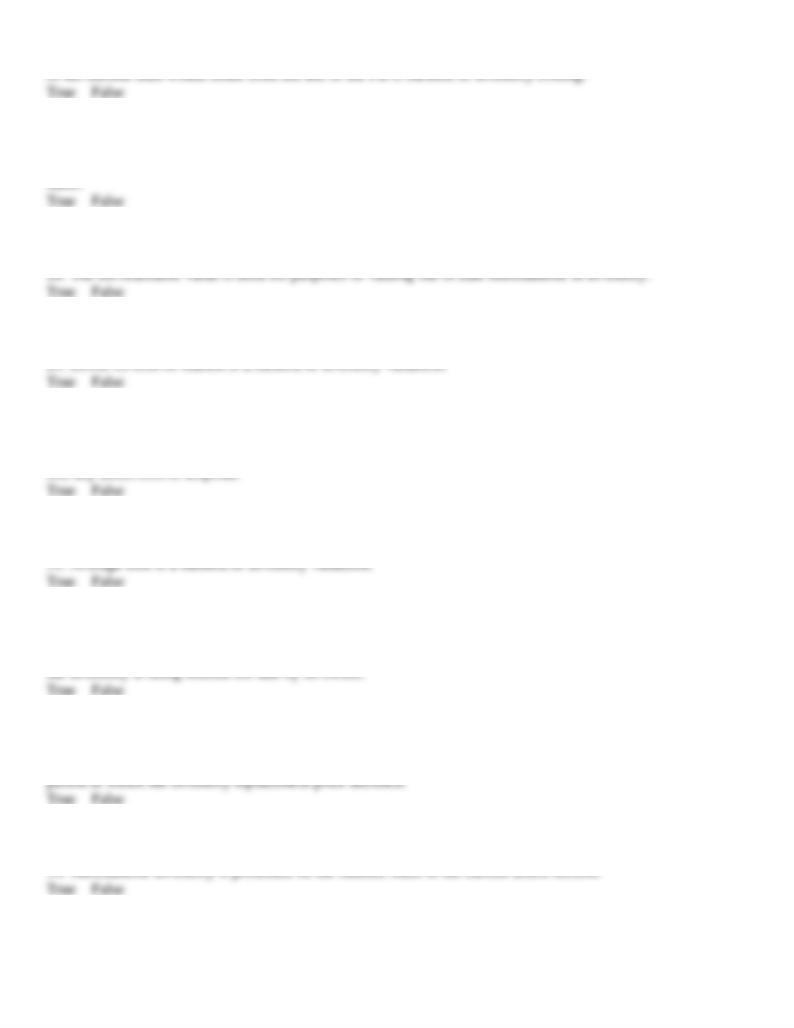
26. During deflationary periods, the use of the LIFO method of costing inventory will result in a greater amount
27. The balance of the allowance for doubtful accounts is deducted from accounts receivable on the balance
30. In valuing damaged merchandise for inventory purposes, net realizable value is the estimated selling price
32. "Market," as used in the phrase "lower of cost or market" for valuing inventory, refers to the price at which
33. The use of the lower-of-cost-or-market method of inventory valuation increases the gross profit for the
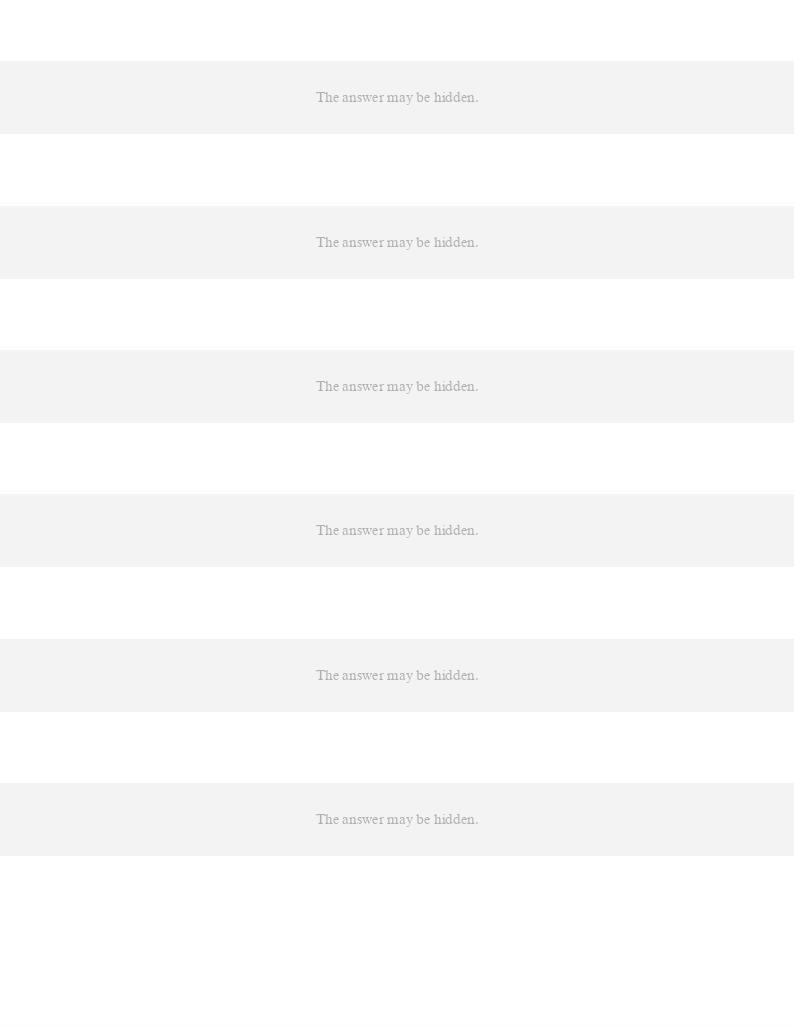
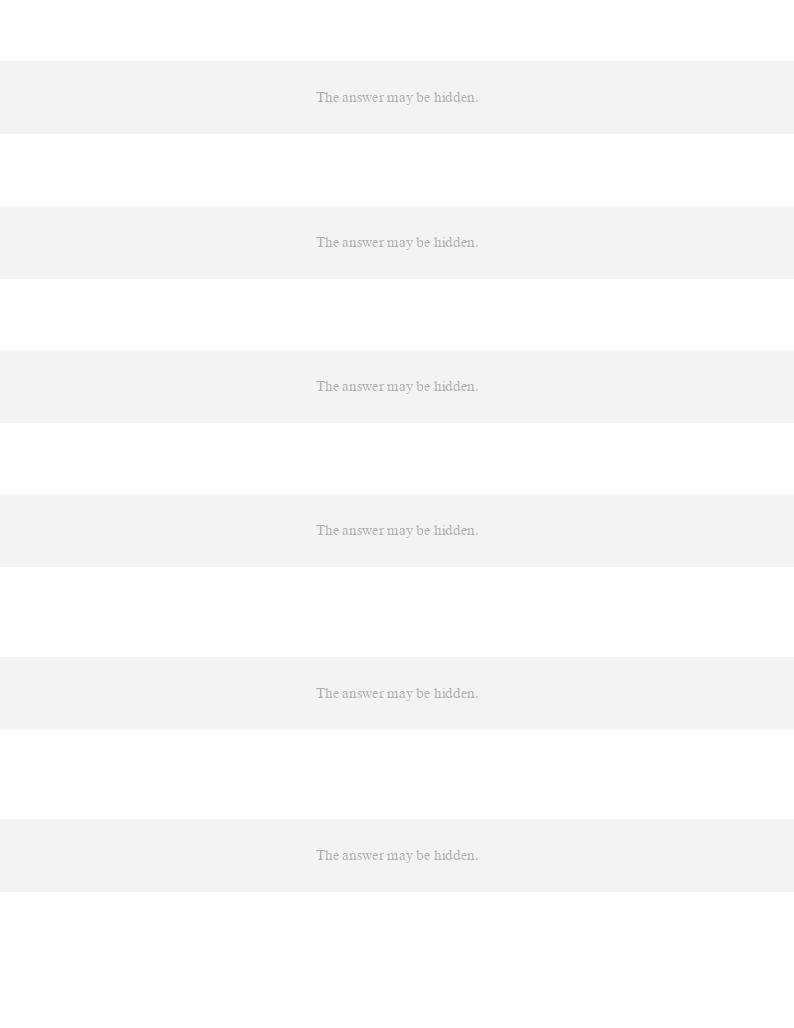
45. A 60-day, 10% note for $6,000 dated April 15 is received from a customer on account. The face value of the
46. A 90-day, 10% note for $10,000 dated April 1 is received from a customer on account. The face value of the
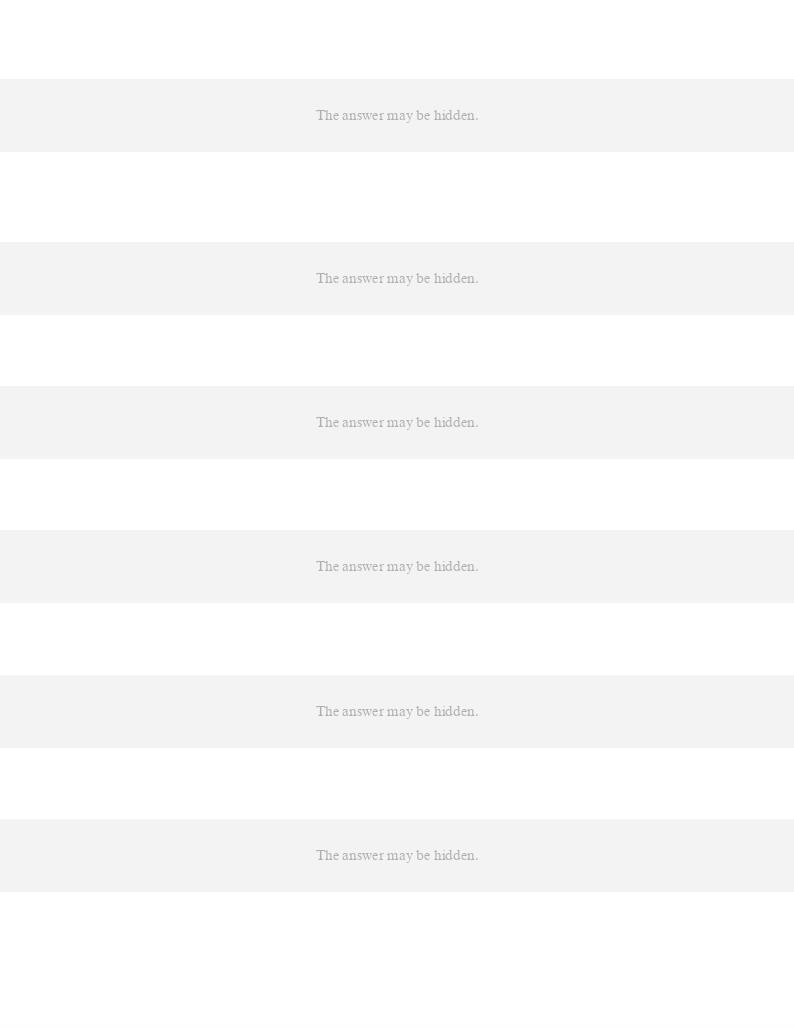
47. A 90-day, 8% note for $10,000 dated May 1 is received from a customer on account. The maturity value of
48. A 60-day, 12% note for $15,000 dated May 1 is received from a customer on account. The maturity value of

54. After the accounts are adjusted and closed at the end of the fiscal year, Accounts Receivable has a balance
of $500,000 and Allowance for Doubtful Accounts has a balance of $25,000. What is the net realizable value of
56. Allowance for Doubtful Accounts has an unadjusted balance of $800 at the end of the year, and an analysis
of accounts in the customers’ ledger indicates doubtful accounts of $15,000. Which of the following records the
57. Allowance for Doubtful Accounts has an unadjusted balance of $500 at the end of the year, and an analysis
of accounts in the customers’ ledger indicates doubtful accounts of $15,000. Compute the adjusted balance in
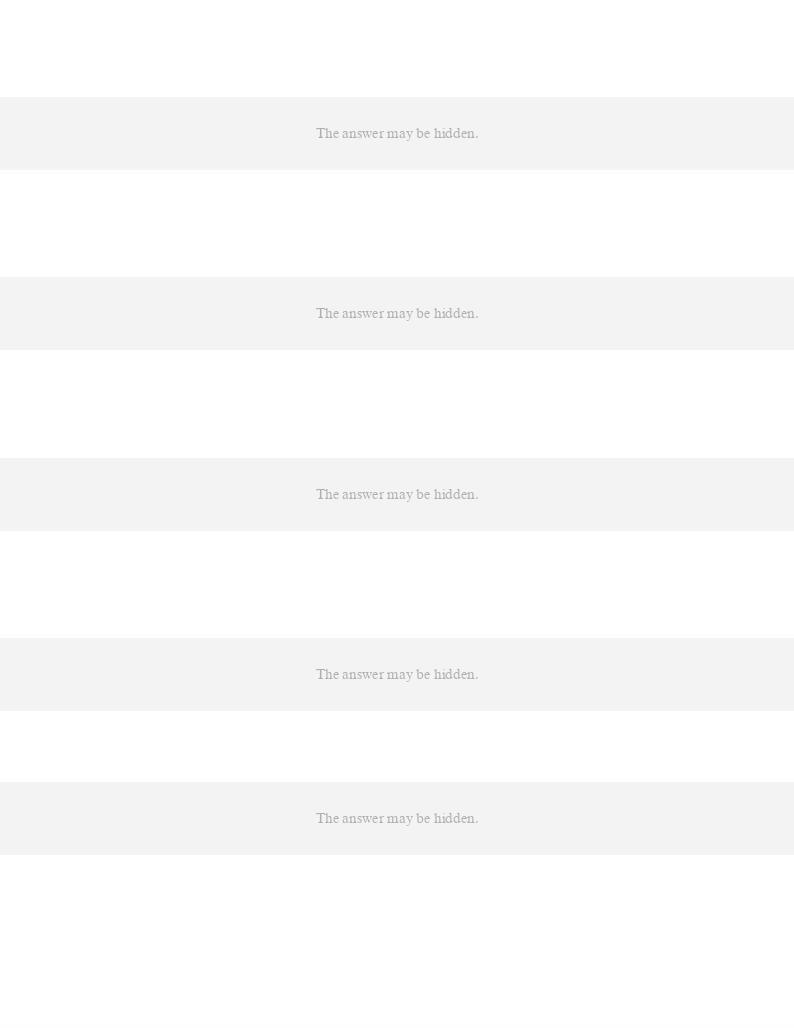
58. After the accounts are adjusted at the end of the fiscal year, Accounts Receivable has a balance of $430,000
and Allowance for Doubtful Accounts has a balance of $30,000. What is the net realizable value of the
59. Allowance for Doubtful Accounts has an unadjusted balance of $1,100 at the end of the year, and an
analysis of customers' accounts indicates doubtful accounts of $12,900. Which of the following records the
60. Allowance for Doubtful Accounts has an unadjusted balance of $500 at the end of the year, and
uncollectible accounts expense is estimated at 1% of net sales. If net sales are $950,000, the amount of the
61. Allowance for Doubtful Accounts has an unadjusted balance of $400 at the end of the year, and
uncollectible accounts expense is estimated at 1% of net sales. If net sales are $300,000, compute the amount of
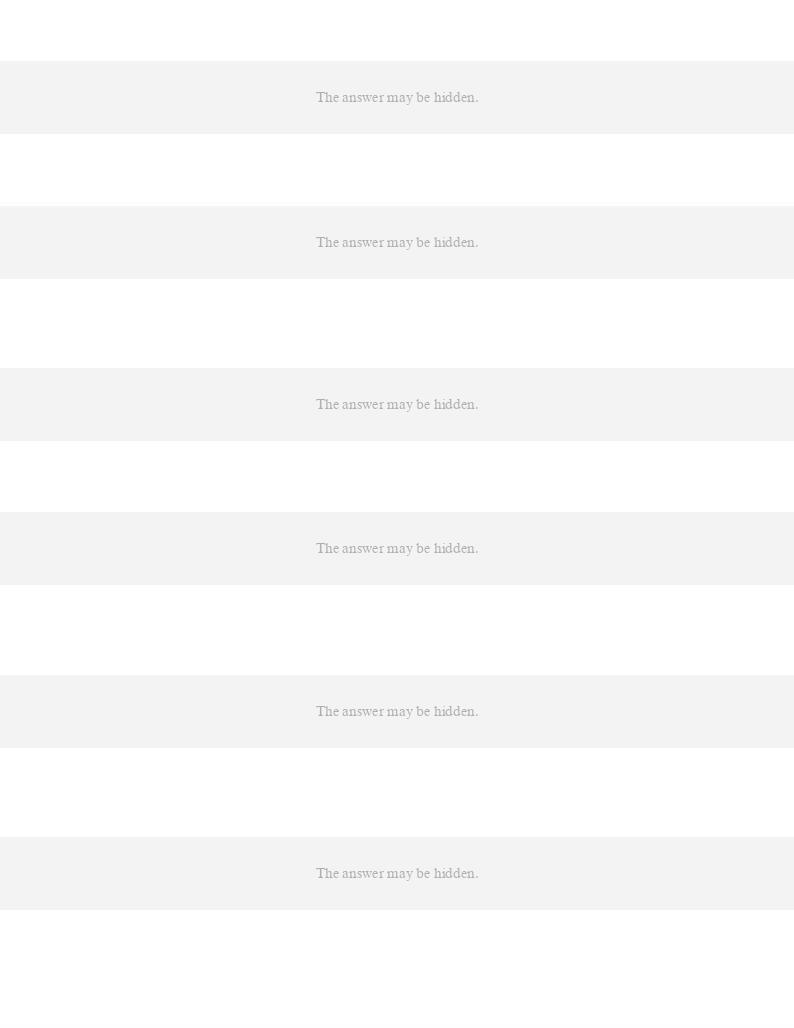
65. The inventory costing method that considers the ending inventory to be composed of units of the
67. When merchandise sold is assumed to be in the order in which the expenditures were made, the inventory
68. Under which method of inventory costing is the ending inventory assumed to be composed of the most
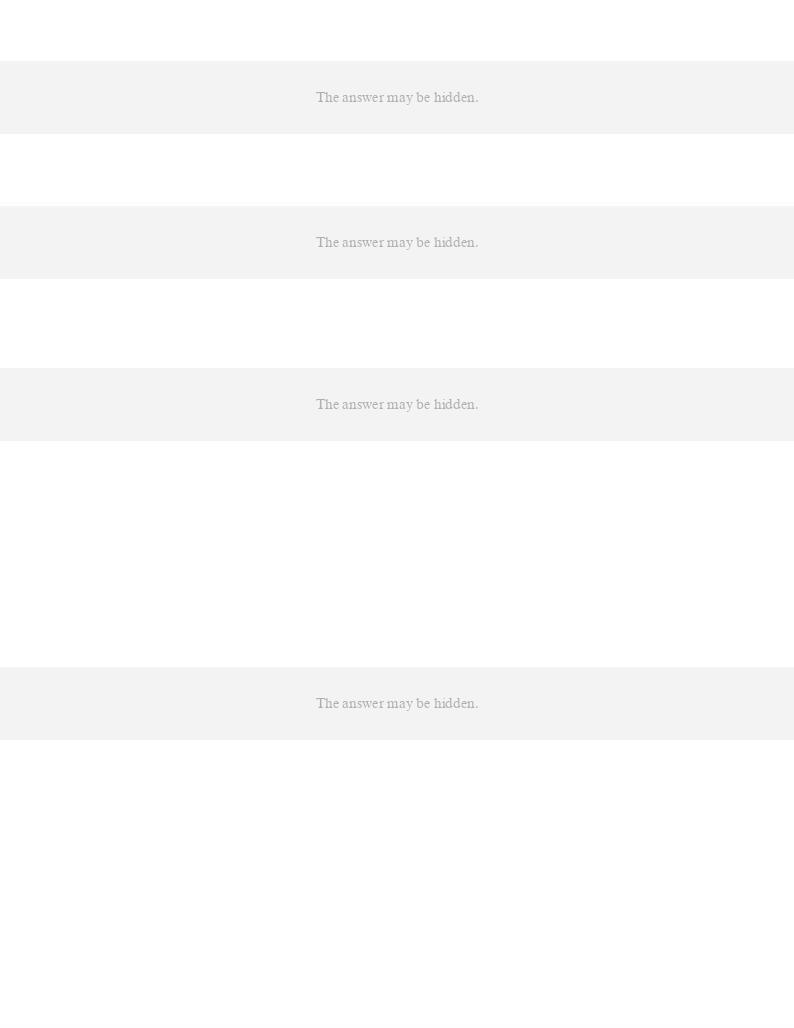
71. Under which method of inventory costing is the cost flow assumed to be in the reverse order in which the
72. The inventory data for an item for November are:
Nov. 1
Inventory
25 units at $20 each
10
Purchase
30 units at $21 each
30
Purchase
10 units at $22 each
Sale
35 units
73. The inventory data for an item for November are:
Nov. 1
Inventory
25 units at $20 each
10
Purchase
30 units at $21 each
30
Purchase
10 units at $22 each
Sale
35 units

74. Use the following data to calculate the cost of ending inventory under the FIFO method.
September 1
Beginning Inventory
15 units at $20 each
September 10
Purchase
20 units at $25 each
September 20
Purchase
25 units at $28 each
September 30
Ending Inventory
30 units
75. Use the following data to calculate cost of merchandise sold under FIFO method.
September 1
Beginning Inventory
15 units at $20 each
September 10
Purchase
20 units at $25 each
September 20
Purchase
25 units at $28 each
September 30
Ending Inventory
30 units
76. Use the following data to calculate the cost of ending inventory using the LIFO method.
September 1
Beginning Inventory
15 units at $20 each
September 10
Purchase
20 units at $25 each
September 20
Purchase
25 units at $28 each
September 30
Ending Inventory
30 units
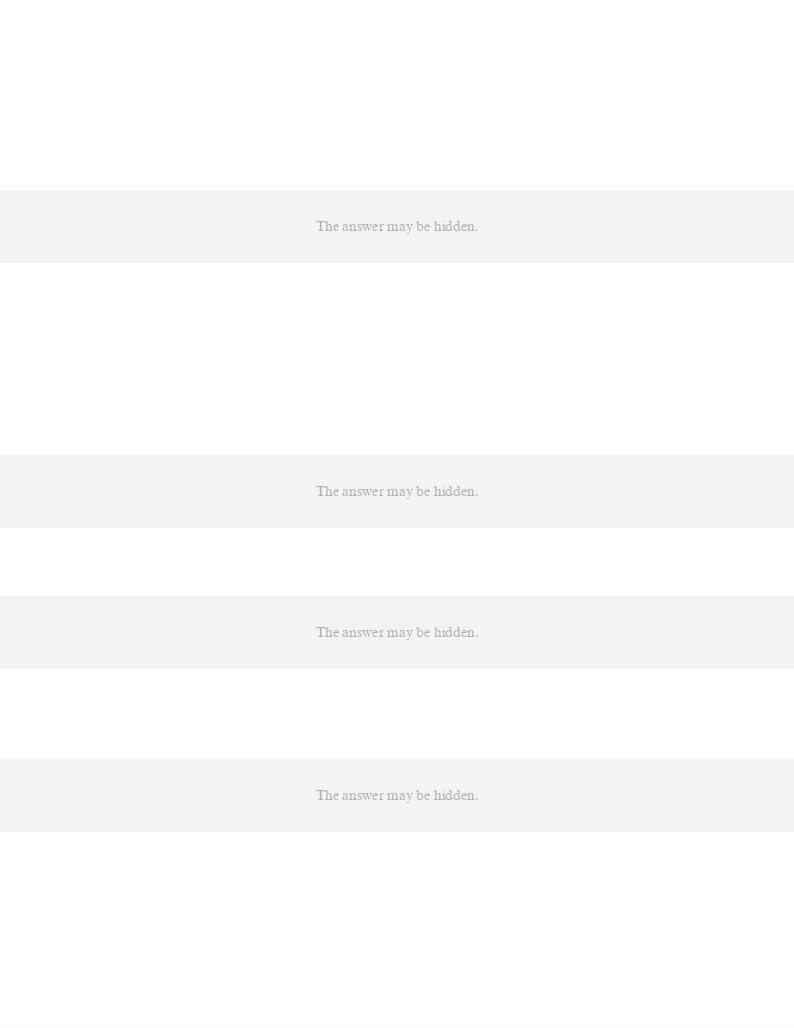
77. Use the following data to calculate the cost of ending inventory under average cost method.
September 1
Beginning Inventory
15 units at $20 each
September 10
Purchase
20 units at $25 each
September 20
Purchase
25 units at $28 each
September 30
Ending Inventory
30 units
78. Calculate the cost of ending inventory using FIFO method.
1/1
Beginning inventory
10 units at $10 each
2/28
Purchase
40 units at $12 each
5/10
Purchase
50 units at $14 each
9/20
Purchase
30 units at $16 each
12/31
Ending inventory
50 units
79. During a period of consistently rising prices, the method of inventory costing that will result in reporting the
80. If merchandise inventory is being valued at cost and the price level is steadily rising, the method of costing
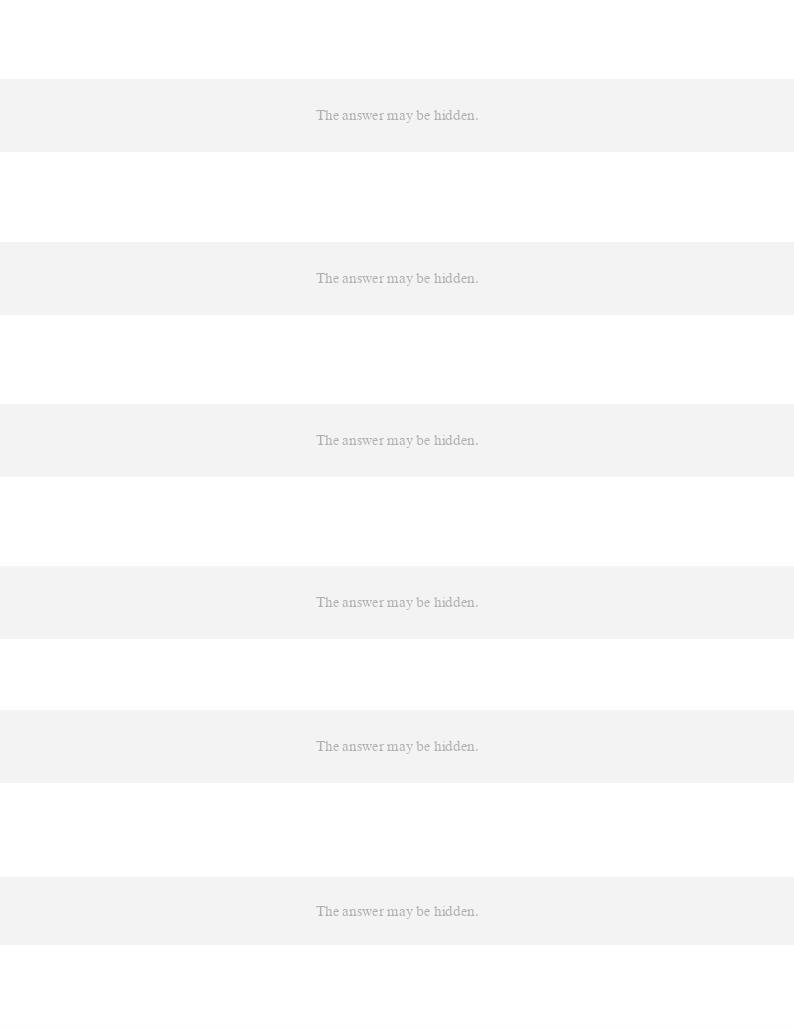
81. If merchandise inventory is being valued at cost and the price level is consistently rising, which method of
82. If merchandise inventory is being valued at cost and the price level is steadily falling, which method of
83. If the cost of an item of inventory is $60 and the current replacement cost is $65, the amount included in
84. If the cost of an item of inventory is $70, the current replacement cost is $65, and the sales price is $85, the
86. Classify the following as either Current Assets (CA), Investments (I), or both (CA and I).
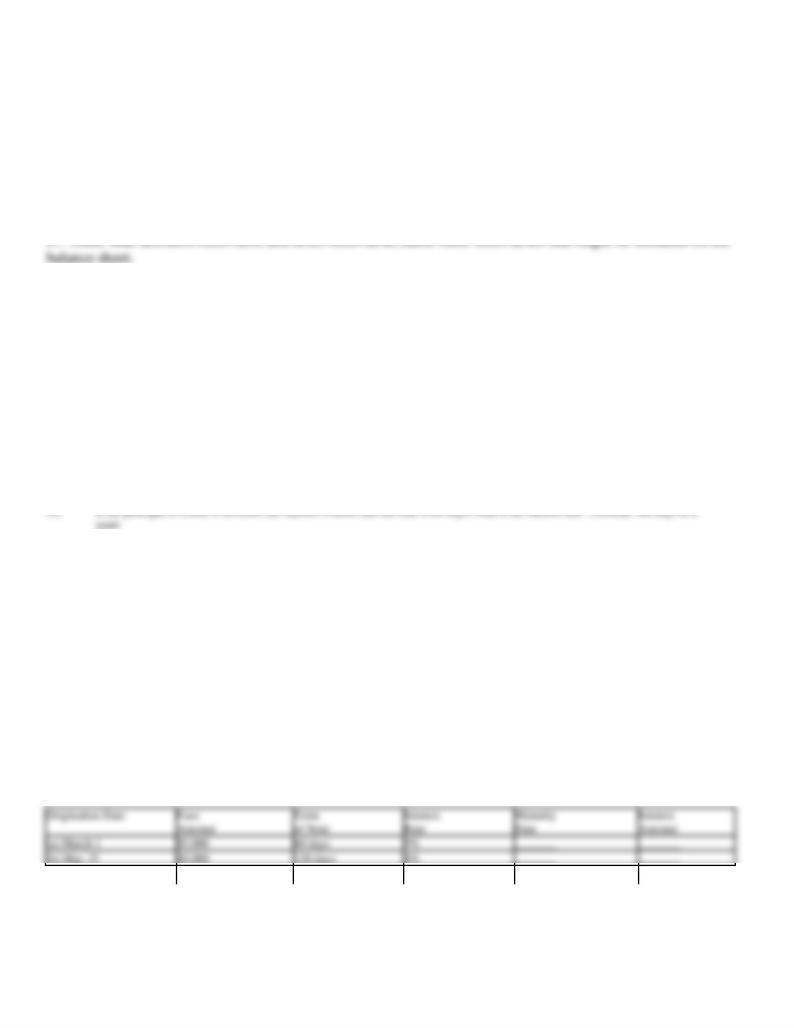
88.
(a)
If the interest on a note is $800, the interest rate is 6%, and the time is 60 days, what is the principal? (Assume 360 days in a year)
89. Determine the due date and amount of interest due at maturity on the following notes (Assume 360 days in a
year):

90. Determine the amount to be added to Allowance for Doubtful Accounts in each of the following cases:
91. Beginning inventory, purchases, and sales data for May are as follows:
May 1
Inventory
20 units at $40 each
12
Purchase
18 units at $42 each
Sales
25 units
92. The following units are available for sale during the year:
January 1
Beginning Inventory
10 units at $18 each
April 3
Purchase
30 units at $20 each
August 31
Purchase
28 units at $25 each
September 29
Purchase
17 units at $30 each
December 31
Ending Inventory
21 units
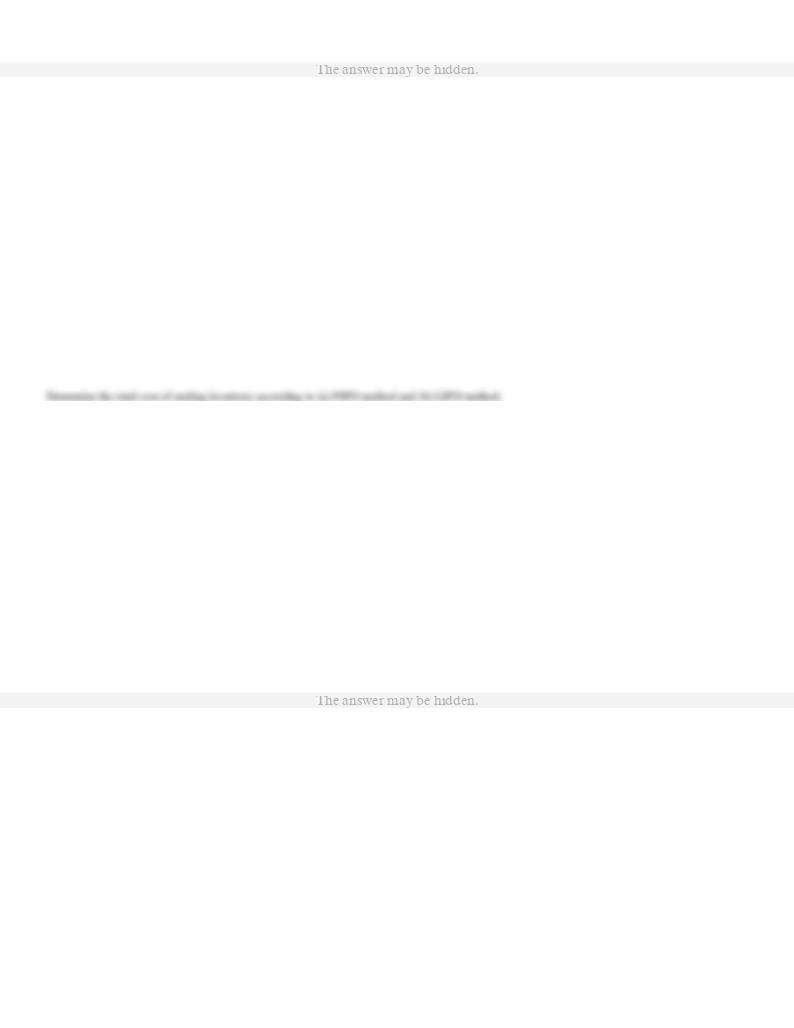
93. Beginning inventory, purchases and sales data for the month are as follows:
Beginning Inventory
10 units at $42 each
First Purchase
15 units at $44 each
Second Purchase
13 units at $45 each
Sales
26 units
94.
September 5
Purchase
65 units at $6 each
September 13
Purchase
55 units at $8 each
September 29
Purchase
44 units at $10 each
September 30
Ending Inventory
70 units
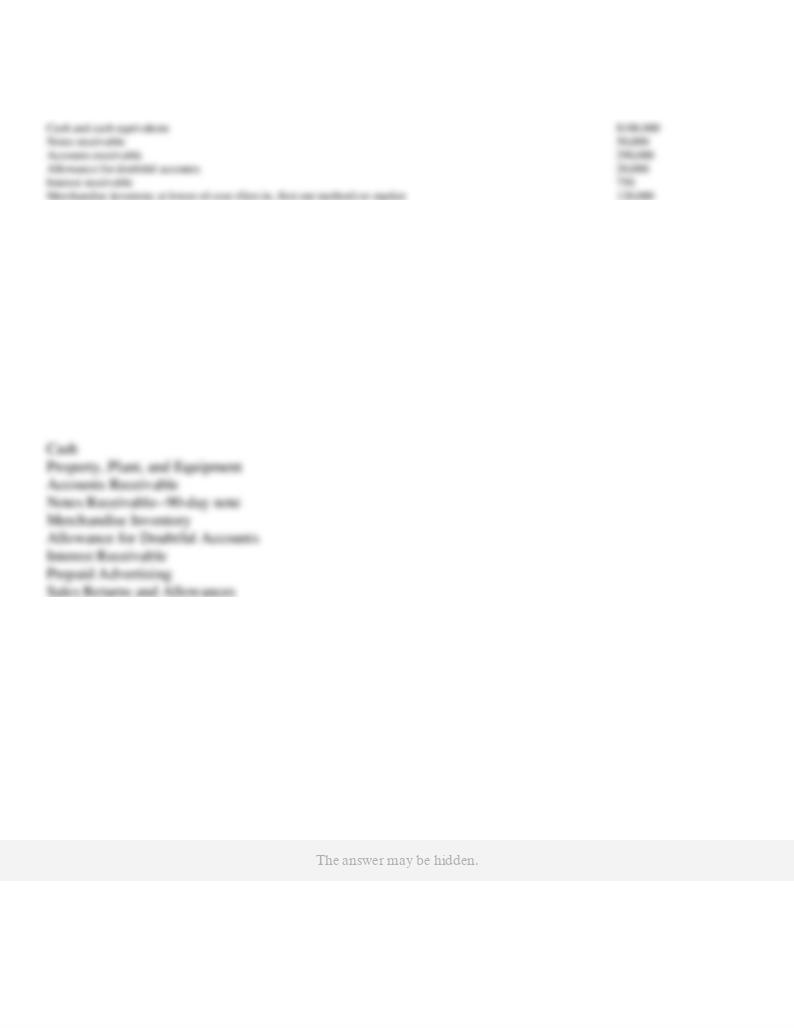
95. On the basis of the following data related to current assets for Mission Co. at December 2013, prepare a
partial balance sheet in good form.
96. Prepare the Current Assets section of a balance sheet using some or all of the following accounts:
97. Indicate the section of the balance sheet (current assets, fixed assets, investments, current liabilities,
long-term liabilities, stockholders' equity) in which each of the following is reported:

98. Beginning inventory, purchases, and sales for Product XCX are as follows:
Oct. 1
Beginning Inventory
24 units
at
$12 each
Oct. 17
Purchase
10 units
at
$15 each
Oct. 30
Sale
25 units
99. Beginning inventory, purchases, and sales for Product XCX are as follows:
Oct. 1
Beginning Inventory
24 units
at
$12 each
Oct. 17
Purchase
10 units
at
$14 each
Oct. 30
Sale
52 units
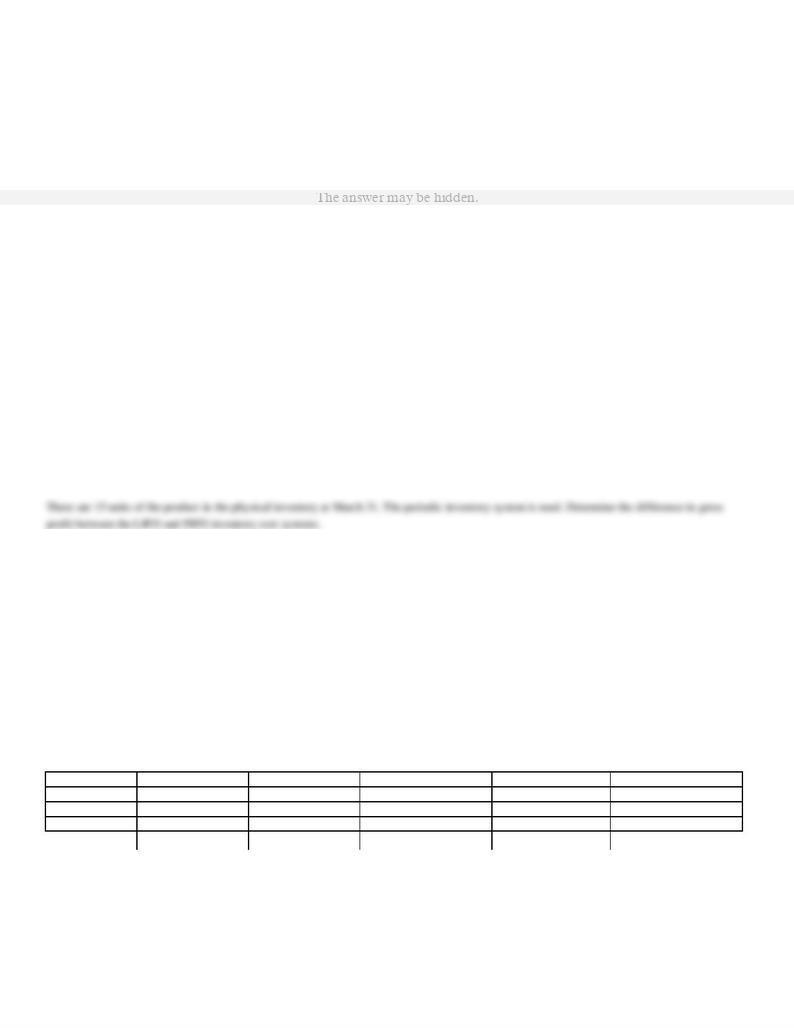
100. The units of Product YY2 available for sale during the year were as follows:
Apr. 1
Inventory
16 units
at
$30 each
Jun. 16
Purchase
30 units
at
$33 each
Sep. 28
Purchase
45 units
at
$37 each
There are 17 units of the product in the physical ending inventory at March 31. The periodic inventory system is used. Determine the ending
101. The units of Product YY2 available for sale during the year were as follows:
Apr 1
Inventory
16 units
at
$30 each
Jun 16
Purchase
30 units
at
$33 each
Sep 28
Purchase
45 units
at
$37 each
102. Using the lower-of-cost-or-market method of inventory valuation, what should the total inventory value be
for the following items:
Item
Inventory Quantity
Unit cost price
Unit market price
Total cost price
Total market price
A
200
$5
$4.50
$1,000
$900
B
100
4
5.00
400
500
C
50
7
6.50
350
325

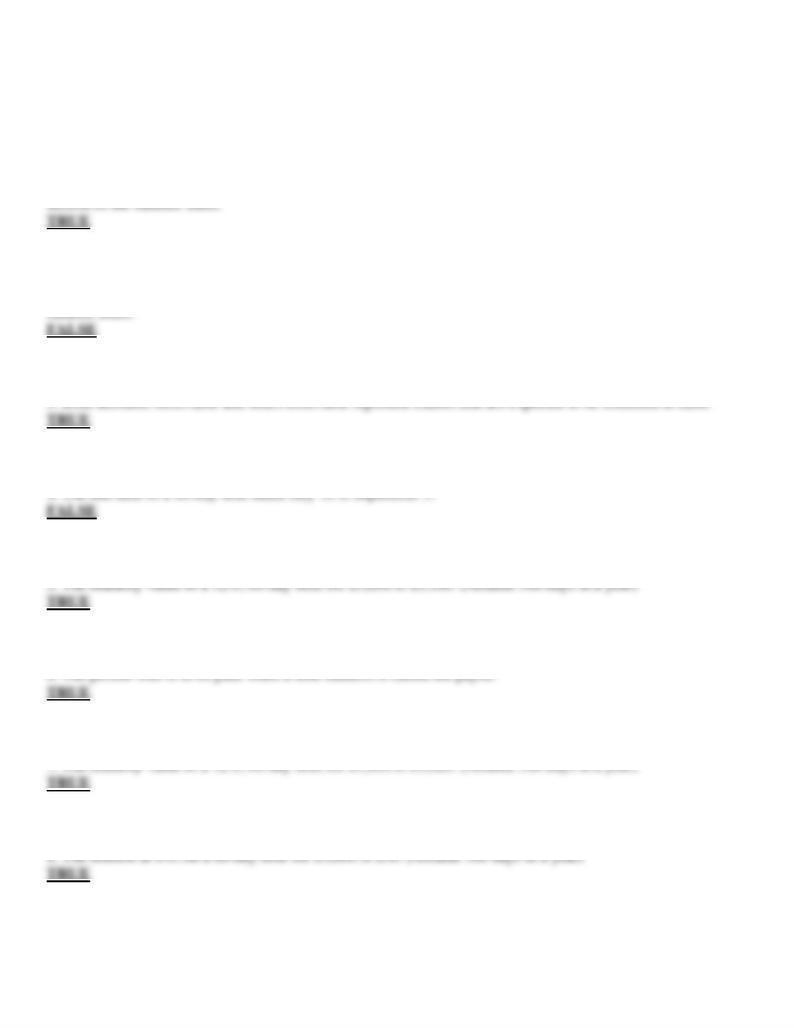
Chapter 6--Receivables and Inventories Key
1. All receivables that are expected to be realized in cash within a year are presented in the current assets
2. Receivables not expected to be collected within one year are reported in the fixed assets section of the

12. Under the direct write-off method, an attempt is made to match Bad Debt Expense to sales revenues in the
13. Generally accepted accounting principles do not normally allow the use of the allowance method of
14. The direct write-off method records uncollectible accounts expense in the year the specific account
17. The difference between the total receivables and the balance in Allowance for Doubtful Accounts at the end
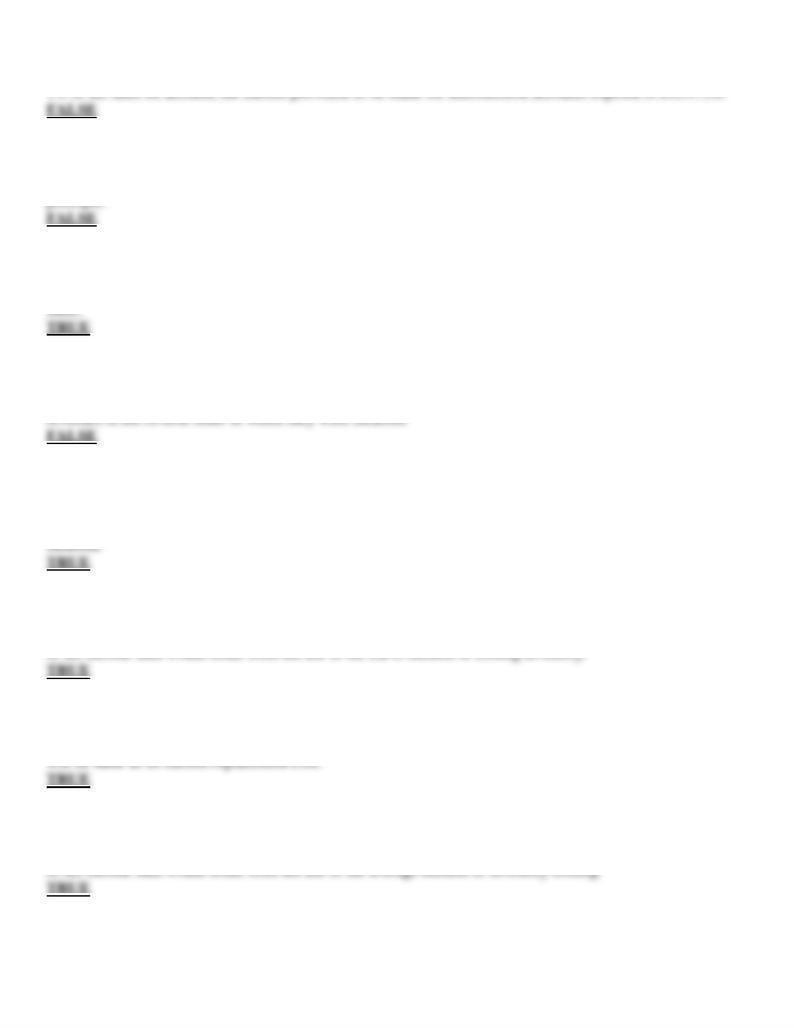
18. At the end of a period before the accounts are adjusted, Allowance for Doubtful Accounts has a balance of
$250, and net sales on account for the period total $500,000. If uncollectible accounts expense is estimated at
19. The estimate of uncollectible accounts receivable based on the sales method violates the matching
20. Inventories of merchandising and manufacturing businesses are reported as current assets on the balance
21. The FIFO method of costing inventory is based on the assumption that costs should be charged against
22. Of the three widely used inventory costing methods (FIFO, LIFO, and average), the FIFO method of costing
inventory is based on the assumption that costs are charged against revenues in the order in which they were
23. During inflationary periods, the use of the FIFO method of costing inventory will result in a greater amount
24. During inflationary periods, the value of inventory that appears on the balance sheet using FIFO method
25. During inflationary periods, the use of the LIFO method of costing inventory will result in a lesser amount
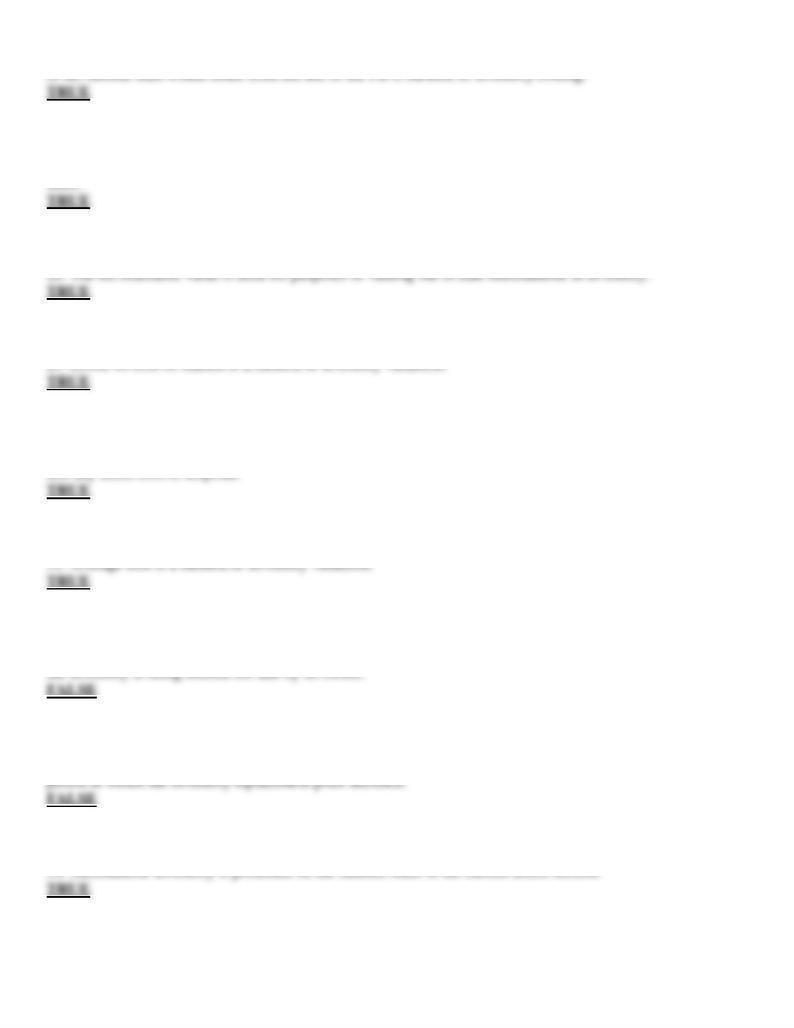
26. During deflationary periods, the use of the LIFO method of costing inventory will result in a greater amount
27. The balance of the allowance for doubtful accounts is deducted from accounts receivable on the balance
30. In valuing damaged merchandise for inventory purposes, net realizable value is the estimated selling price
32. "Market," as used in the phrase "lower of cost or market" for valuing inventory, refers to the price at which
33. The use of the lower-of-cost-or-market method of inventory valuation increases the gross profit for the
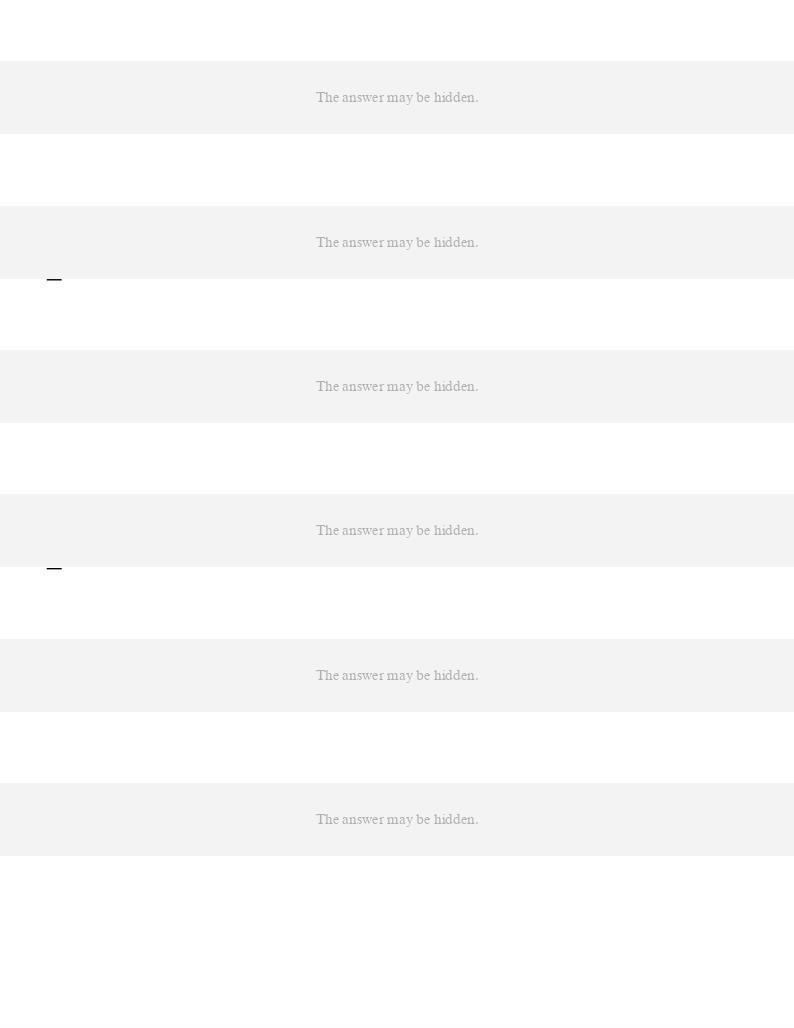
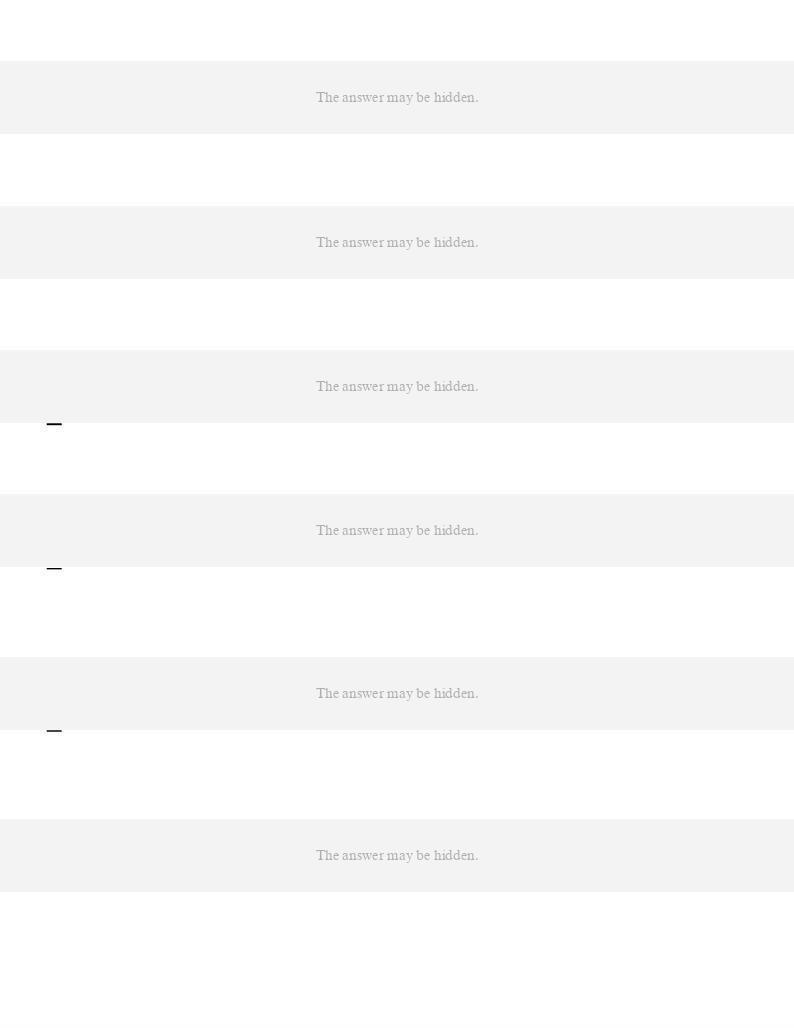
45. A 60-day, 10% note for $6,000 dated April 15 is received from a customer on account. The face value of the
46. A 90-day, 10% note for $10,000 dated April 1 is received from a customer on account. The face value of the

47. A 90-day, 8% note for $10,000 dated May 1 is received from a customer on account. The maturity value of
48. A 60-day, 12% note for $15,000 dated May 1 is received from a customer on account. The maturity value of
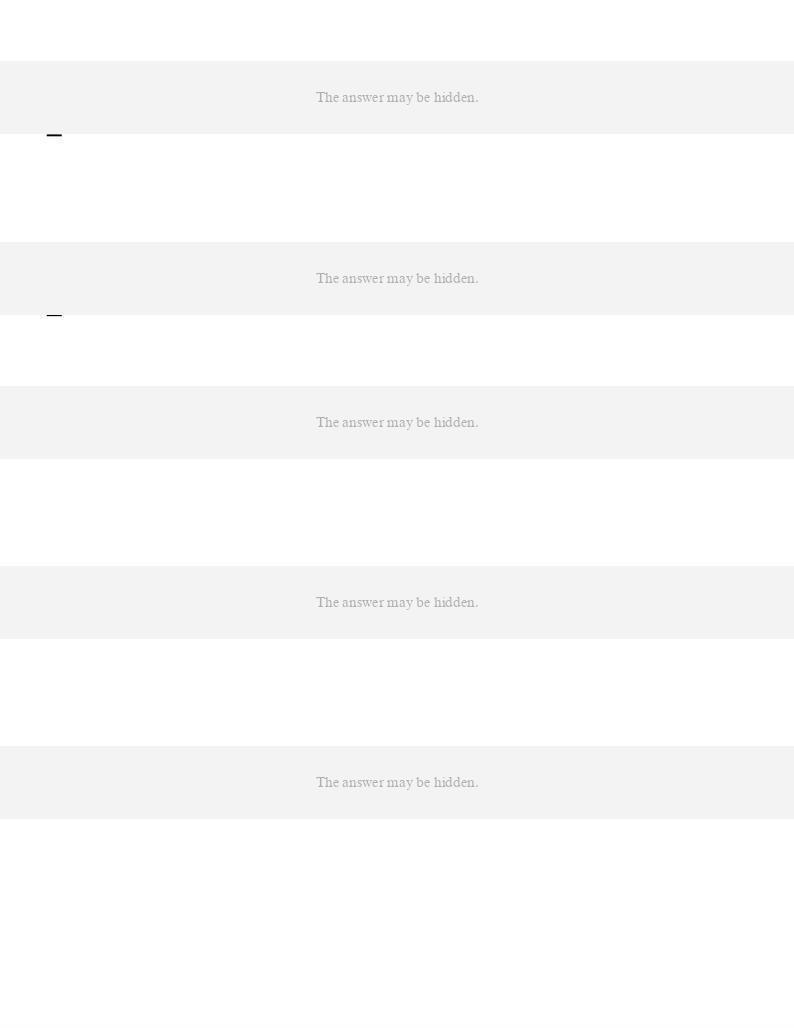
54. After the accounts are adjusted and closed at the end of the fiscal year, Accounts Receivable has a balance
of $500,000 and Allowance for Doubtful Accounts has a balance of $25,000. What is the net realizable value of
56. Allowance for Doubtful Accounts has an unadjusted balance of $800 at the end of the year, and an analysis
of accounts in the customers’ ledger indicates doubtful accounts of $15,000. Which of the following records the
57. Allowance for Doubtful Accounts has an unadjusted balance of $500 at the end of the year, and an analysis
of accounts in the customers’ ledger indicates doubtful accounts of $15,000. Compute the adjusted balance in
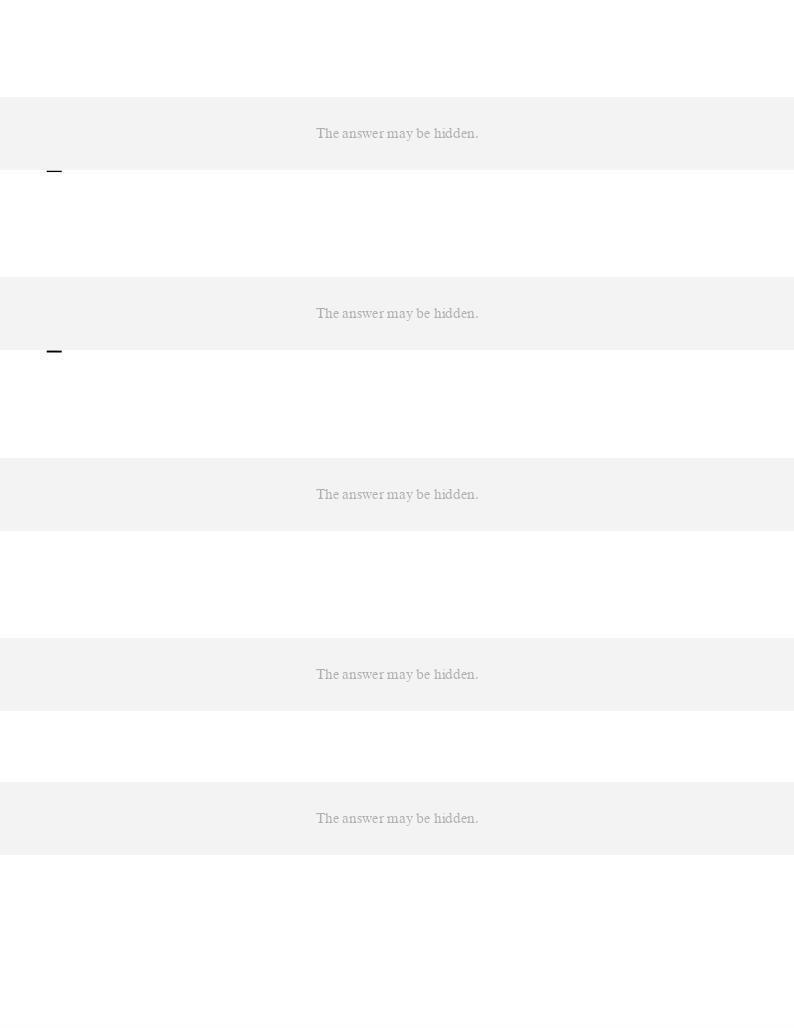
58. After the accounts are adjusted at the end of the fiscal year, Accounts Receivable has a balance of $430,000
and Allowance for Doubtful Accounts has a balance of $30,000. What is the net realizable value of the
59. Allowance for Doubtful Accounts has an unadjusted balance of $1,100 at the end of the year, and an
analysis of customers' accounts indicates doubtful accounts of $12,900. Which of the following records the
60. Allowance for Doubtful Accounts has an unadjusted balance of $500 at the end of the year, and
uncollectible accounts expense is estimated at 1% of net sales. If net sales are $950,000, the amount of the
61. Allowance for Doubtful Accounts has an unadjusted balance of $400 at the end of the year, and
uncollectible accounts expense is estimated at 1% of net sales. If net sales are $300,000, compute the amount of
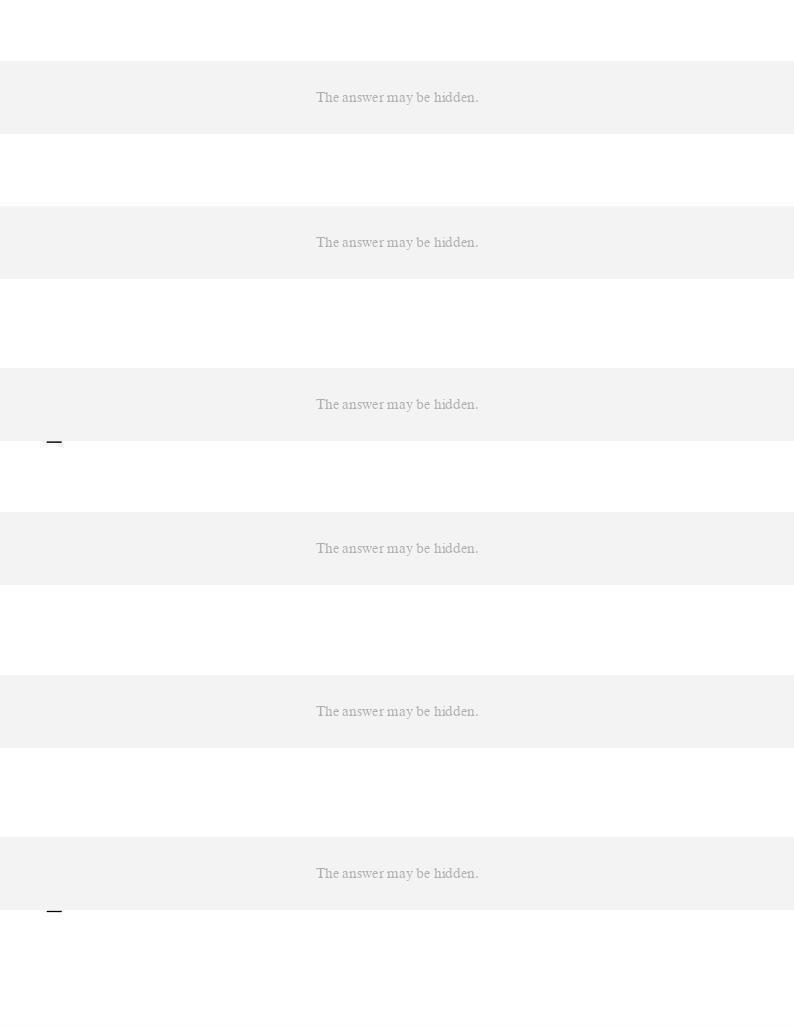
65. The inventory costing method that considers the ending inventory to be composed of units of the
67. When merchandise sold is assumed to be in the order in which the expenditures were made, the inventory
68. Under which method of inventory costing is the ending inventory assumed to be composed of the most
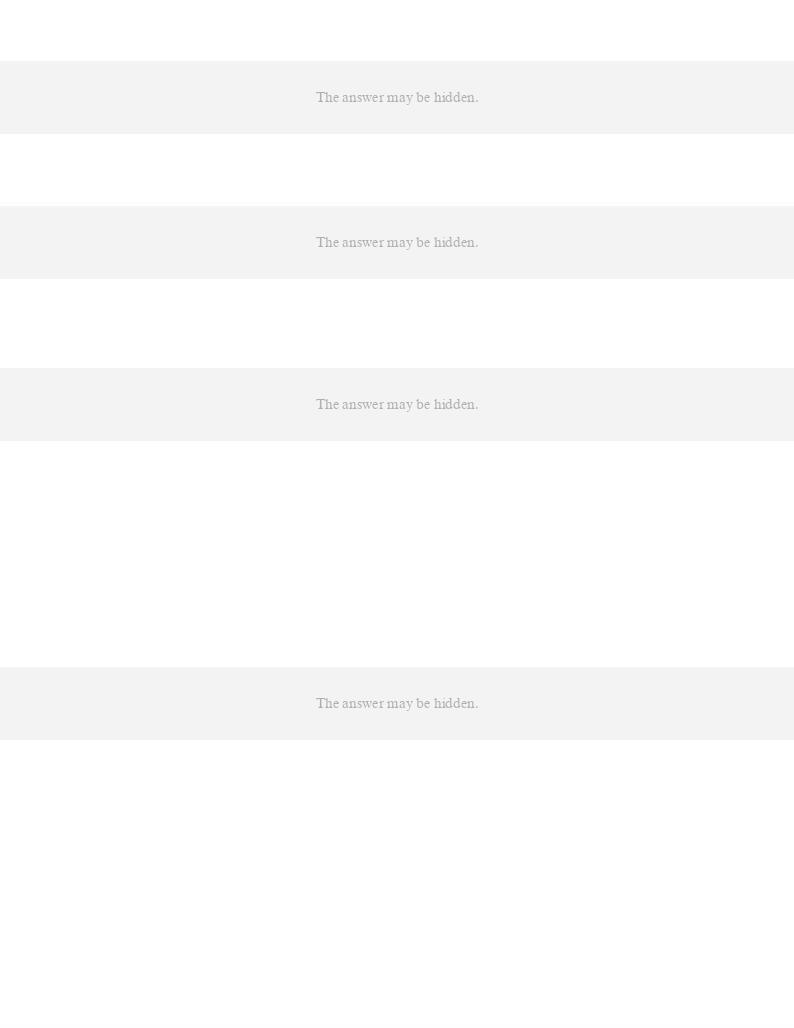
71. Under which method of inventory costing is the cost flow assumed to be in the reverse order in which the
72. The inventory data for an item for November are:
Nov. 1
Inventory
25 units at $20 each
10
Purchase
30 units at $21 each
30
Purchase
10 units at $22 each
Sale
35 units
73. The inventory data for an item for November are:
Nov. 1
Inventory
25 units at $20 each
10
Purchase
30 units at $21 each
30
Purchase
10 units at $22 each
Sale
35 units
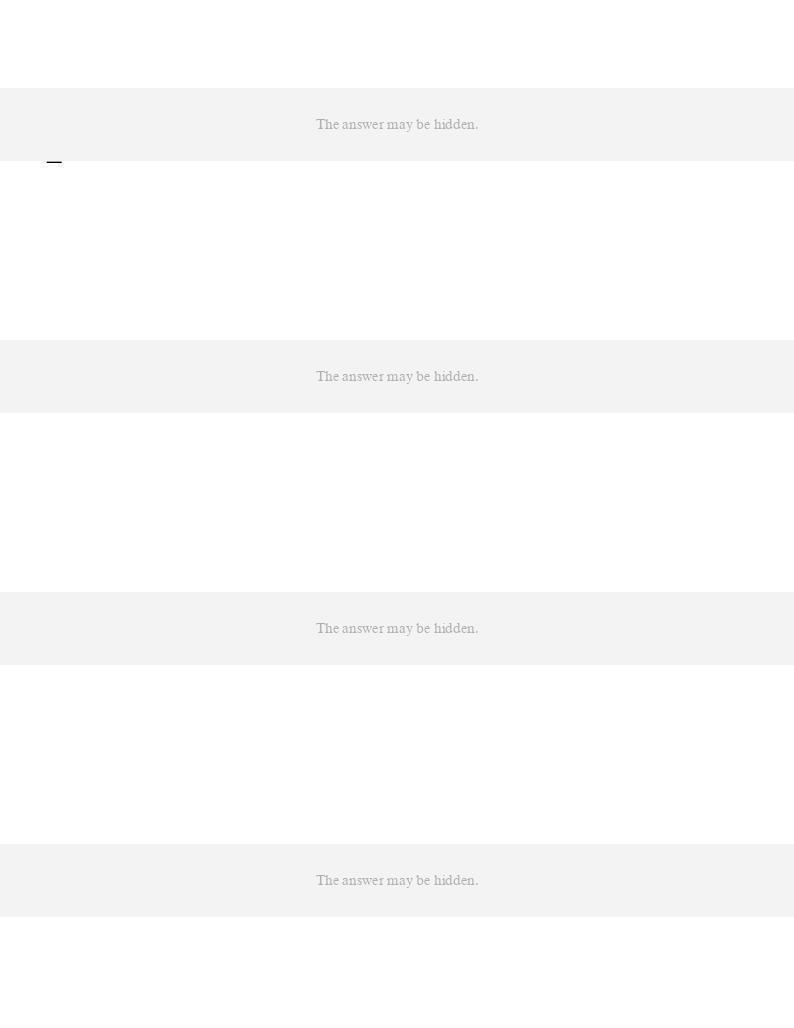
74. Use the following data to calculate the cost of ending inventory under the FIFO method.
September 1
Beginning Inventory
15 units at $20 each
September 10
Purchase
20 units at $25 each
September 20
Purchase
25 units at $28 each
September 30
Ending Inventory
30 units
75. Use the following data to calculate cost of merchandise sold under FIFO method.
September 1
Beginning Inventory
15 units at $20 each
September 10
Purchase
20 units at $25 each
September 20
Purchase
25 units at $28 each
September 30
Ending Inventory
30 units
76. Use the following data to calculate the cost of ending inventory using the LIFO method.
September 1
Beginning Inventory
15 units at $20 each
September 10
Purchase
20 units at $25 each
September 20
Purchase
25 units at $28 each
September 30
Ending Inventory
30 units
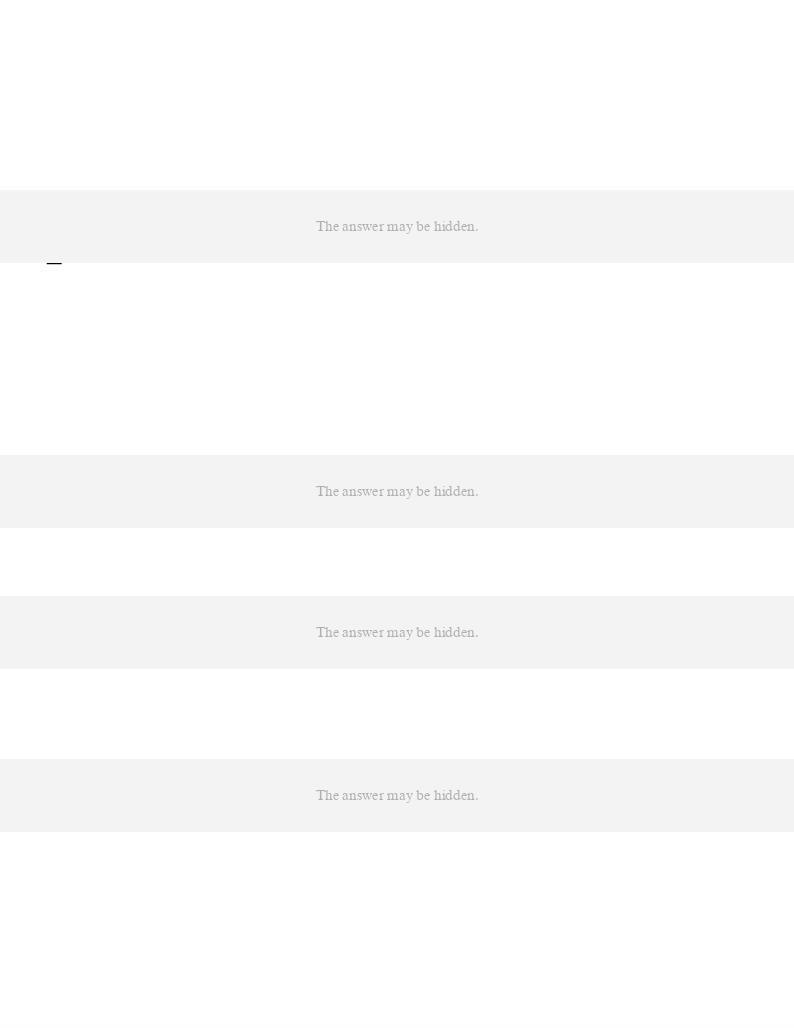
77. Use the following data to calculate the cost of ending inventory under average cost method.
September 1
Beginning Inventory
15 units at $20 each
September 10
Purchase
20 units at $25 each
September 20
Purchase
25 units at $28 each
September 30
Ending Inventory
30 units
78. Calculate the cost of ending inventory using FIFO method.
1/1
Beginning inventory
10 units at $10 each
2/28
Purchase
40 units at $12 each
5/10
Purchase
50 units at $14 each
9/20
Purchase
30 units at $16 each
12/31
Ending inventory
50 units
79. During a period of consistently rising prices, the method of inventory costing that will result in reporting the
80. If merchandise inventory is being valued at cost and the price level is steadily rising, the method of costing
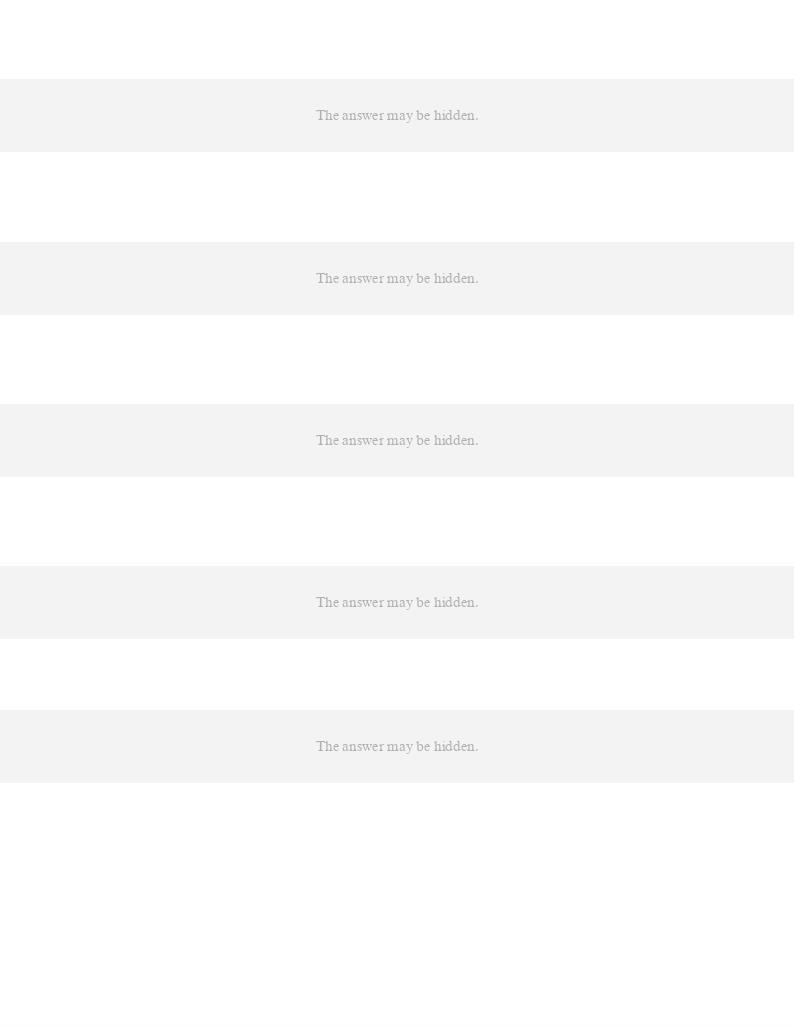
81. If merchandise inventory is being valued at cost and the price level is consistently rising, which method of
82. If merchandise inventory is being valued at cost and the price level is steadily falling, which method of
83. If the cost of an item of inventory is $60 and the current replacement cost is $65, the amount included in
84. If the cost of an item of inventory is $70, the current replacement cost is $65, and the sales price is $85, the
86. Classify the following as either Current Assets (CA), Investments (I), or both (CA and I).
(a)
Trade Receivables
(b)
Note Receivable due in 30 days
(c)
Interest Receivable on note due in 30 days
(d)
Note Receivable due in 2 years
(e)
Five-year Note Receivable due in a series of equal annual payments
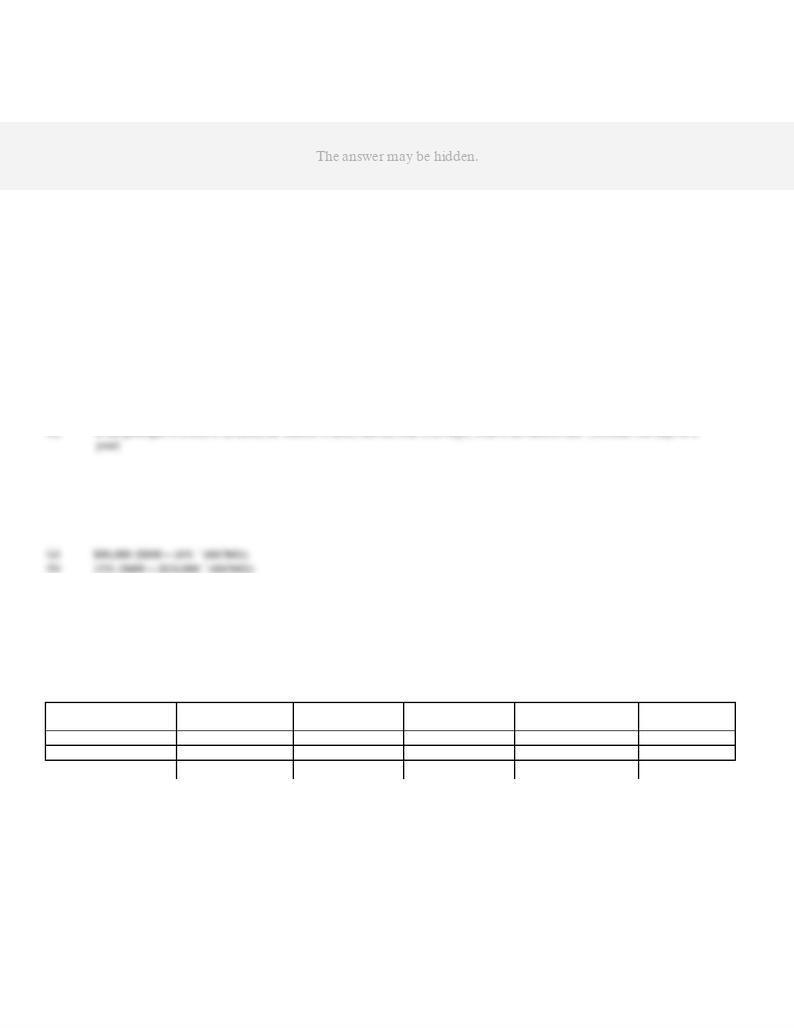
87. Other than accounts receivable and notes receivable, name other receivables that might be included on the
balance sheet.
Interest Receivable, Receivables from Officers or Employees, Taxes Receivable.
88.
(a)
If the interest on a note is $800, the interest rate is 6%, and the time is 60 days, what is the principal? (Assume 360 days in a year)
89. Determine the due date and amount of interest due at maturity on the following notes (Assume 360 days in a
year):
Origination Date
Face
Amount
Term
of Note
Interest
Rate
Maturity
Date
Interest
Amount
(a) March 1
$5,000
60 days
9%
_______
_______
(b) May 15
$9,000
120 days
8%
_______
_______
(a)
April 30; $75 = ($5,000 ´ .09) ´ (60/360)
(b)
September 12; $240 = ($9,000 ´ .08) ´ (120/360)
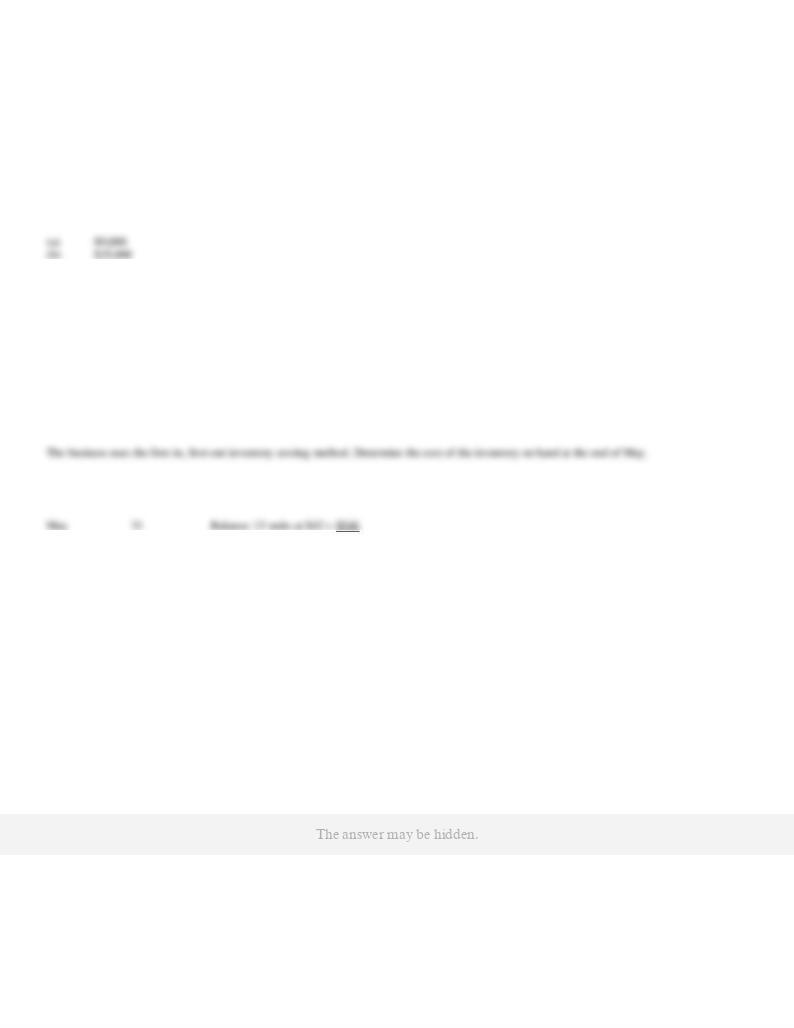
90. Determine the amount to be added to Allowance for Doubtful Accounts in each of the following cases:
(a)
Balance of $500 in the allowance account just prior to adjustment. Analysis of accounts receivable indicates doubtful accounts of
$9,500.
(b)
Balance of $950 in the allowance account just prior to adjustment. Uncollectibles are estimated at 3.5% of sales, which totaled
$1,000,000 for the year.
91. Beginning inventory, purchases, and sales data for May are as follows:
May 1
Inventory
20 units at $40 each
12
Purchase
18 units at $42 each
Sales
25 units
92. The following units are available for sale during the year:
January 1
Beginning Inventory
10 units at $18 each
April 3
Purchase
30 units at $20 each
August 31
Purchase
28 units at $25 each
September 29
Purchase
17 units at $30 each
December 31
Ending Inventory
21 units
Determine ending inventory cost by (a) FIFO method, (b) LIFO method, and (c) average cost method.

93. Beginning inventory, purchases and sales data for the month are as follows:
Beginning Inventory
10 units at $42 each
First Purchase
15 units at $44 each
Second Purchase
13 units at $45 each
Sales
26 units
94.
September 5
Purchase
65 units at $6 each
September 13
Purchase
55 units at $8 each
September 29
Purchase
44 units at $10 each
September 30
Ending Inventory
70 units
Determine ending inventory cost by (a) FIFO method, (b) LIFO method, and (c) average cost method.
95. On the basis of the following data related to current assets for Mission Co. at December 2013, prepare a
partial balance sheet in good form.
Cash and cash equivalents
$100,000
Notes receivable
50,000
Accounts receivable
290,000
Allowance for doubtful accounts
20,000
Interest receivable
750
Merchandise inventory at lower-of-cost-(first-in, first-out method) or-market
120,000
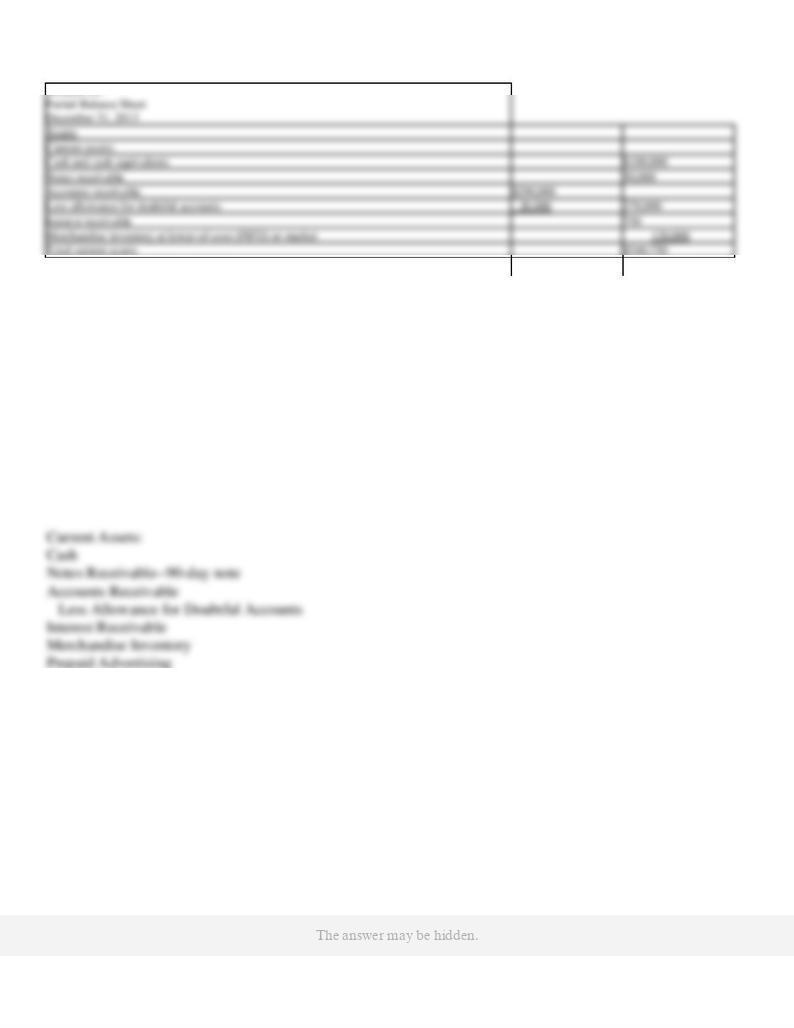
96. Prepare the Current Assets section of a balance sheet using some or all of the following accounts:
Cash
Property, Plant, and Equipment
Accounts Receivable
Notes Receivable--90-day note
Merchandise Inventory
Allowance for Doubtful Accounts
Interest Receivable
Prepaid Advertising
Sales Returns and Allowances
97. Indicate the section of the balance sheet (current assets, fixed assets, investments, current liabilities,
long-term liabilities, stockholders' equity) in which each of the following is reported:
(a)
Note receivable due in 3 years
(b)
Note receivable due in 90 days
(c)
Allowance for doubtful accounts

98. Beginning inventory, purchases, and sales for Product XCX are as follows:
Oct. 1
Beginning Inventory
24 units
at
$12 each
Oct. 17
Purchase
10 units
at
$15 each
Oct. 30
Sale
25 units
99. Beginning inventory, purchases, and sales for Product XCX are as follows:
Oct. 1
Beginning Inventory
24 units
at
$12 each
Oct. 17
Purchase
10 units
at
$14 each
Oct. 30
Sale
52 units
100. The units of Product YY2 available for sale during the year were as follows:
Apr. 1
Inventory
16 units
at
$30 each
Jun. 16
Purchase
30 units
at
$33 each
Sep. 28
Purchase
45 units
at
$37 each
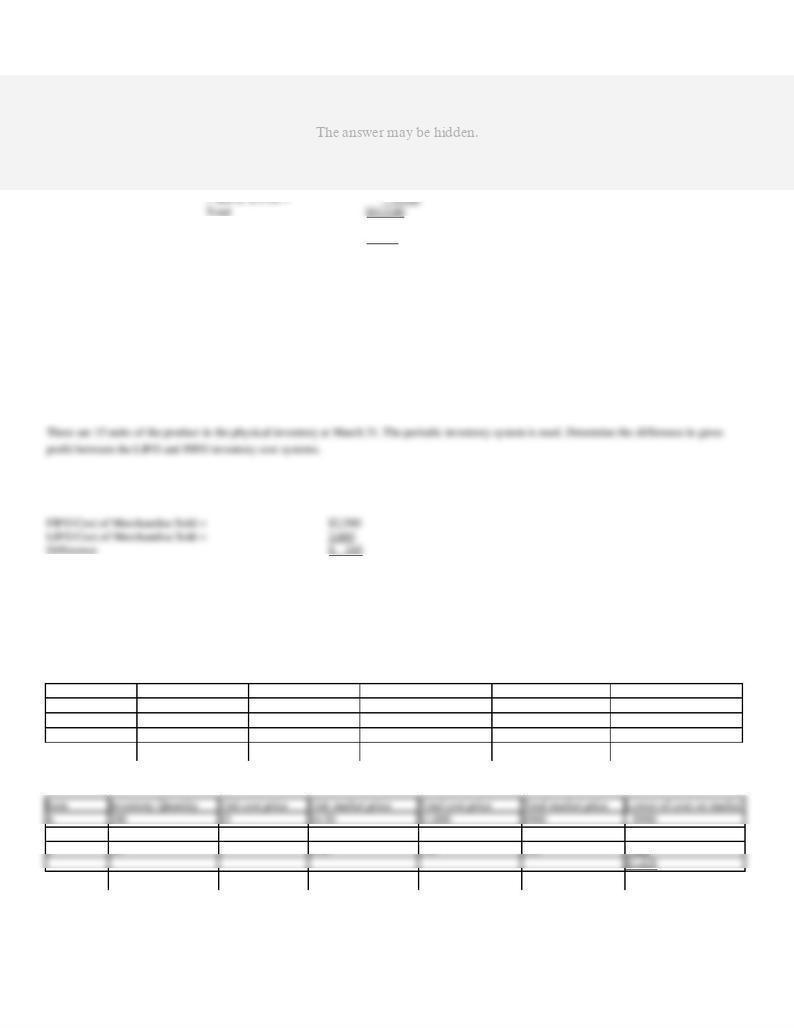
There are 17 units of the product in the physical ending inventory at March 31. The periodic inventory system is used. Determine the ending
Average cost:
17 units at $34.45 =
585.65
101. The units of Product YY2 available for sale during the year were as follows:
Apr 1
Inventory
16 units
at
$30 each
Jun 16
Purchase
30 units
at
$33 each
Sep 28
Purchase
45 units
at
$37 each
102. Using the lower-of-cost-or-market method of inventory valuation, what should the total inventory value be
for the following items:
Item
Inventory Quantity
Unit cost price
Unit market price
Total cost price
Total market price
A
200
$5
$4.50
$1,000
$900
B
100
4
5.00
400
500
C
50
7
6.50
350
325
B
100
4
5.00
400
500
400
C
50
7
6.50
350
325
325